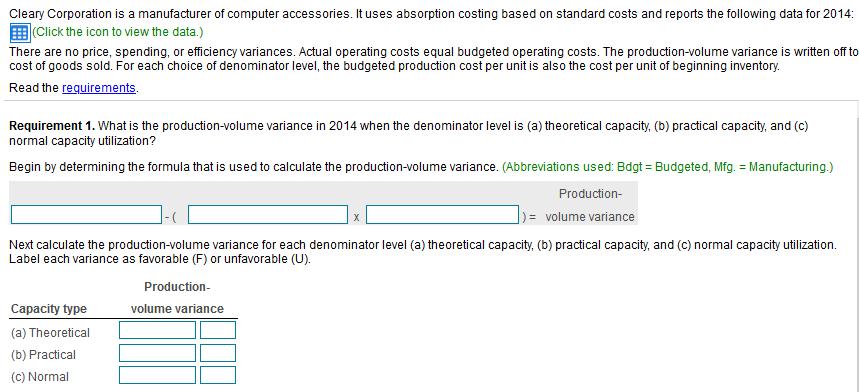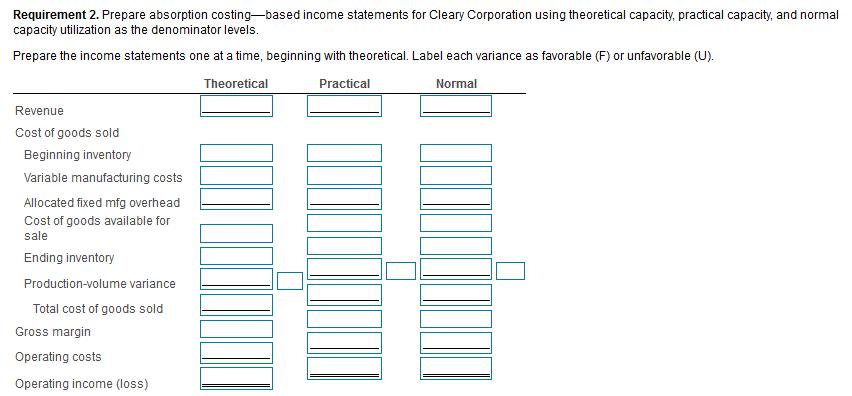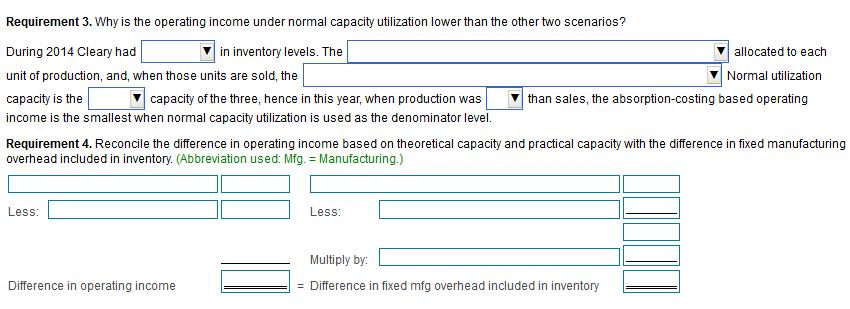Answered step by step
Verified Expert Solution
Question
1 Approved Answer
Theoretical capacity 262,500 units Practical capacity 210,000 units Normal capacity utilization 196,000 units Selling price $39 per unit Beginning inventory 20,000 units Production 205,000 units



Theoretical capacity 262,500 units
Practical capacity 210,000 units
Normal capacity utilization 196,000 units
Selling price $39 per unit
Beginning inventory 20,000 units
Production 205,000 units
Sales volume 220,000 units
Variable budgeted manufacturing cost $8 per unit
Total budgeted fixed manufacturing costs $2,940,000
Total budgeted operating (non-manuf.) costs (all fixed) $230,000
Cleary Corporation is a manufacturer of computer accessories. It uses absorption costing based on standard costs and reports the following data for 2014: EE (Click the icon to view the data.) There are no price, spending, or efficiency variances. Actual operating costs equal budgeted operating costs. The production-volume variance is written off to cost of goods sold. For each choice of denominator level, the budgeted production cost per unit is also the cost per unit of beginning inventory. Read the requirements. Requirement 1. What is the production-volume variance in 2014 when the denominator level is (a) theoretical capacity, (b) practical capacity, and (c) normal capacity utilization? Begin by determining the formula that is used to calculate the production-volume variance. (Abbreviations used: Bdgt = Budgeted, Mfg. - Manufacturing.) Production- >= volume variance Next calculate the production-volume variance for each denominator level (a) theoretical capacity, (b) practical capacity, and (c) normal capacity utilization. Label each variance as favorable (F) or unfavorable (U). Production- volume variance Capacity type (a) Theoretical (b) Practical (c) Normal
Step by Step Solution
★★★★★
3.50 Rating (163 Votes )
There are 3 Steps involved in it
Step: 1
During 2014 Donaldson had a drop of 15000 units in inventory levels The smaller the denominator level the larger is the budgeted fixed cost allocated ...
Get Instant Access to Expert-Tailored Solutions
See step-by-step solutions with expert insights and AI powered tools for academic success
Step: 2

Step: 3

Ace Your Homework with AI
Get the answers you need in no time with our AI-driven, step-by-step assistance
Get Started


